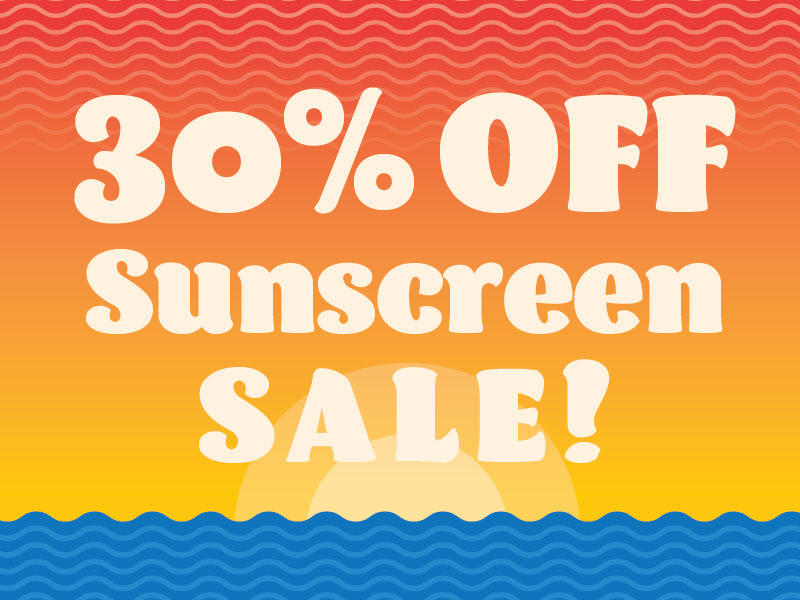CHEMICAL SUNSCREENS
• PROS: Quick and easy to apply, natural hydrating lotion base
• CONS: Due to absorption into the skin and bloodstream, these are considered less safe
• ACTIVE INGREDIENTS: Avobenzone, homosalate, octisalate and others
• PROS: Quick and easy to apply, natural hydrating lotion base
• CONS: Due to absorption into the skin and bloodstream, these are considered less safe
• ACTIVE INGREDIENTS: Avobenzone, homosalate, octisalate and others
• PROS: Considered safer and more effective than chemical sunscreens
• CONS: When applied correctly, these will leave a milky white coating on skin
• ACTIVE INGREDIENTS: Zinc oxide, titanium dioxide
You’ll find two main types of sun protection ingredients on store shelves: chemical sunscreens (e.g. oxybenzone, butyl methoxydibenzoylmethane), which absorb UV-A, UV-B rays or both; and mineral sunblocks (titanium dioxiode and zinc oxide), which physically protect the skin from both UV-A and UV-B rays. While some chemical sunscreens have been deemed relatively safe by experts, mineral sunblock are generally regarded as safer because they don’t penetrate the skin and they’re inherently broad spectrum (zinc oxide is the only approved sunscreen ingredient in the U.S. that protects against UV-A 1, UV-A 2 and UV-B rays). Make sure when you’re picking out a mineral sunblock that it is in a non-nano form (nano minerals are ultrafine particles that can be absorbed into skin). Perennial favorites for the whole family are Badger Broad Spectrum SPF 30 Unscented Sunscreen Cream and California Baby Super Sensitive Broad Spectrum SPF 30+ Sunscreen. Check out Environmental Working Group’s 2017 Guide to Sunscreen for more safe and efficacious options.
Mineral sunblock has a drawback that may be a deal breaker for some: they tend to be difficult to apply and leave the skin with a thick milky white coating. Instead of going sans-protection, there are some healthy alternatives for those that just can’t handle the ghost look. If you do go chemical, just be sure to avoid oxybenzone (an endocrine disruptor, among other things) and retinyl palmitate and mineral sunscreens with nanoparticles.
CHEMICAL OR MINERAL? Chemical sunscreens absorb the suns rays and mineral sunblocks physically protect the skin by creating a reflective barrier.
BROAD SPECTRUM Provides protection from both UVA and UVB rays, both of which increase your risk of skin cancer.
SPF only signifies sunscreen’s abilities to block UVB rays. SPF Sunscreen with an SPF higher than 50 provides only marginally better protection than lower SPF’s and are often misused as people think they’re able to stay out in the sun longer.

We use cookies to improve your experience on our site. By using our site, you consent to cookies.
Manage your cookie preferences below:
Essential cookies enable basic functions and are necessary for the proper function of the website.
These cookies are needed for adding comments on this website.
Google reCAPTCHA helps protect websites from spam and abuse by verifying user interactions through challenges.
Google Tag Manager simplifies the management of marketing tags on your website without code changes.
Statistics cookies collect information anonymously. This information helps us understand how visitors use our website.
Google Analytics is a powerful tool that tracks and analyzes website traffic for informed marketing decisions.
Service URL: policies.google.com
Marketing cookies are used to follow visitors to websites. The intention is to show ads that are relevant and engaging to the individual user.
Facebook Pixel is a web analytics service that tracks and reports website traffic.
Service URL: www.facebook.com
You can find more information in our Cookie Policy.